Create Effective Teams With Data-Informed Team Journeys
How our partner Tribers supports teams and organizations with team journeys - a structured, data-informed approach to improve team effectiveness.
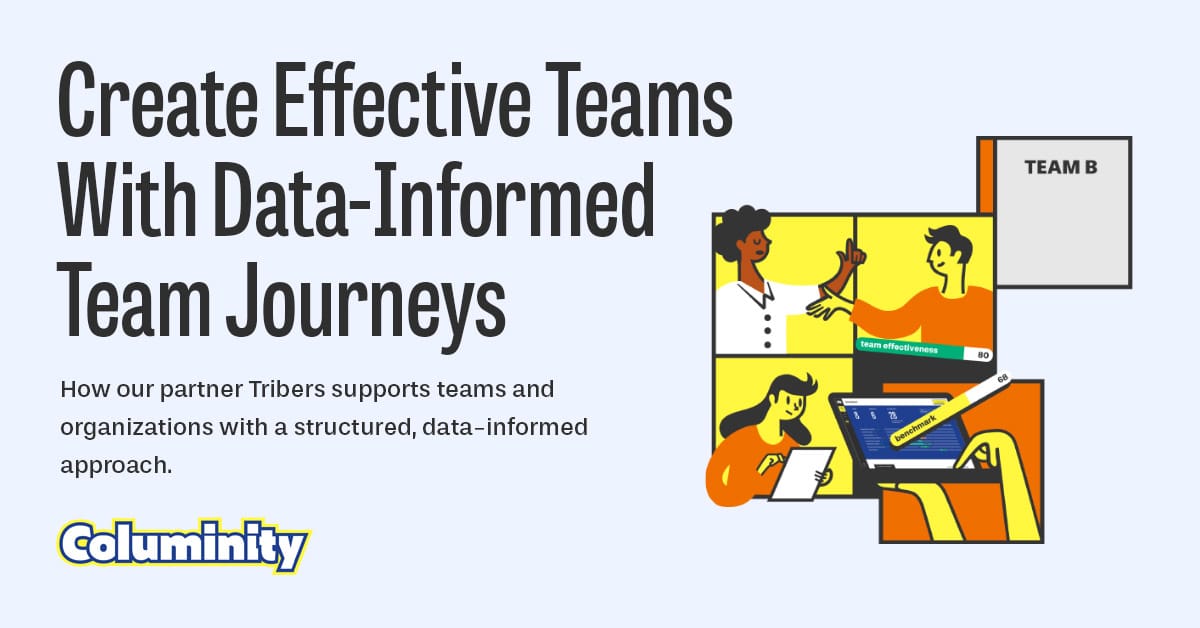
Columinity improves team and organizational effectiveness through data-informed decisions and scientific insights. You can diagnose one or many teams, receive evidence-based feedback, and resolve broader organizational issues. It helps to make decisions based on quantitative and qualitative data and insights from research instead of only on gut feeling, opinions, or intuition.the
Our consultancy partner, Tribers, noticed a growing frustration among organizations with the idea of yet another “agile transformation.” Too often, teams were stuck in processes and procedures rather than focused on meaningful outcomes. There was little visibility into what teams needed and an apparent disconnect between leadership and team realities—on both sides. The challenge wasn’t adopting agile frameworks but making agility real and grounded in what teams experience daily.
To address this, Tribers knew they needed more than opinions—they needed evidence. Columinity offered exactly that: a product to improve team and organizational effectiveness through data-informed decisions and scientific insights. It measures what truly matters in teams, revealing patterns and pain points that often stay hidden. With Columinity, Tribers could shift from guessing what teams might need to knowing precisely where to focus their support. They now use it as the foundation for all their consultancy work.
Based on the data from Columinity, Tribers developed Team Journeys, a structured, step-by-step approach to helping teams grow in a focused and measurable way. These journeys turn insights into action, aligning team efforts with what truly drives effectiveness. It’s a practical way to support teams while creating a visible impact at both the team and organizational levels.
We recently interviewed Melvin van Drimmelen and hosted a public meetup with him and Niels van Hees. This blog post captures the essence. If you want to learn more, check the following videos with Melvin:
- How to be more effective with your team?
- Tips for interpreting Columinity's results
- How to get management on board?
- How to make a data-driven impact with your teams?
- Dutch video: "Hoe creeer je effectieve teams door data?"
Team Journeys
Team effectiveness plays a significant role in an organization’s overall success. Yet it's often difficult to define what makes a team truly effective, let alone how to improve it. Columinity’s scientific models offer a clear, evidence-based starting point. They help teams understand the key factors influencing their performance and highlight where growth is possible. For Tribers, the insights from Columinity triggered Team Journeys - a structured, data-informed way to guide teams through meaningful and continuous improvement.
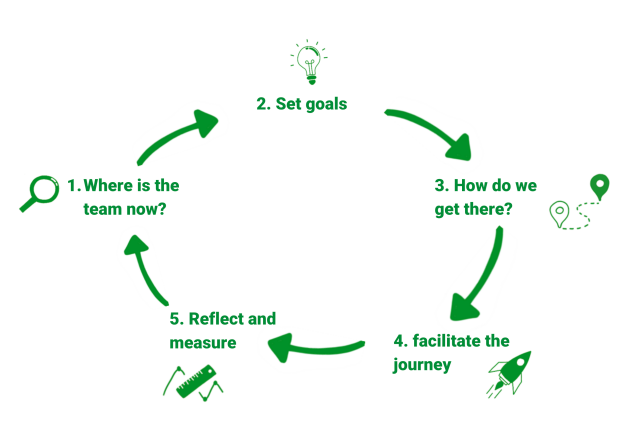
1. Where is the team now?
Using the Columinity questionnaire and resulting team reports, Tribers captures a clear picture of the team's current state. The report highlights strengths, challenges, and untapped potential grounded in science. It’s a starting point that shifts the conversation from opinion to insight. The report also creates a shared language, helping team members see patterns they may have sensed but never clearly articulated. This shared understanding sets the stage for more focused and productive conversations.
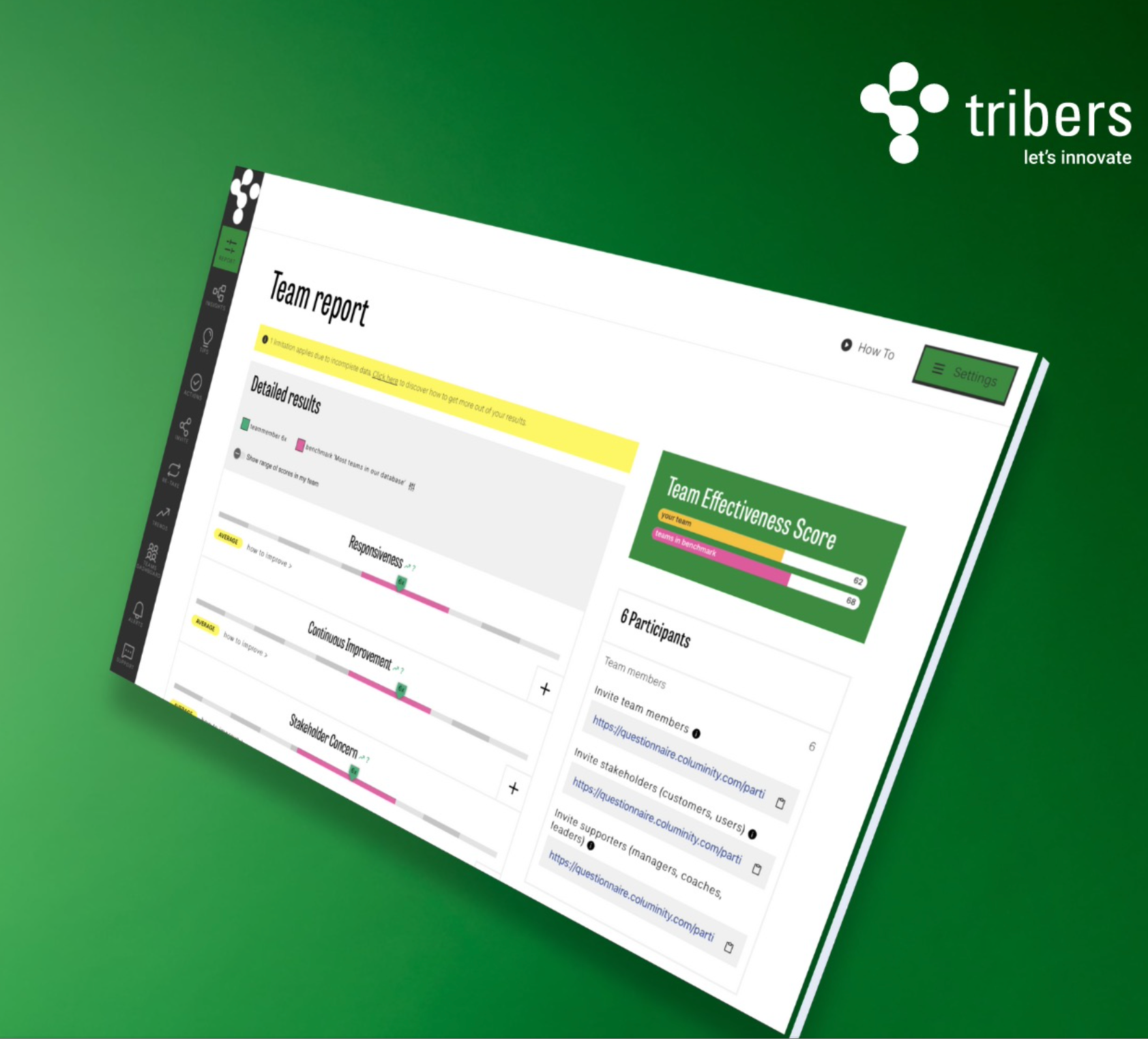
2. Discuss outcomes and set goals
With the data on the table, the team discusses what stands out and where they want to grow. Together, they define a few clear focus areas—tangible, meaningful, and aligned with the team’s reality. These are framed as goals the team is motivated to work on. The process encourages open dialogue and surfaces different perspectives, ensuring the goals resonate with everyone involved. This shared ownership increases commitment and clarity moving forward.
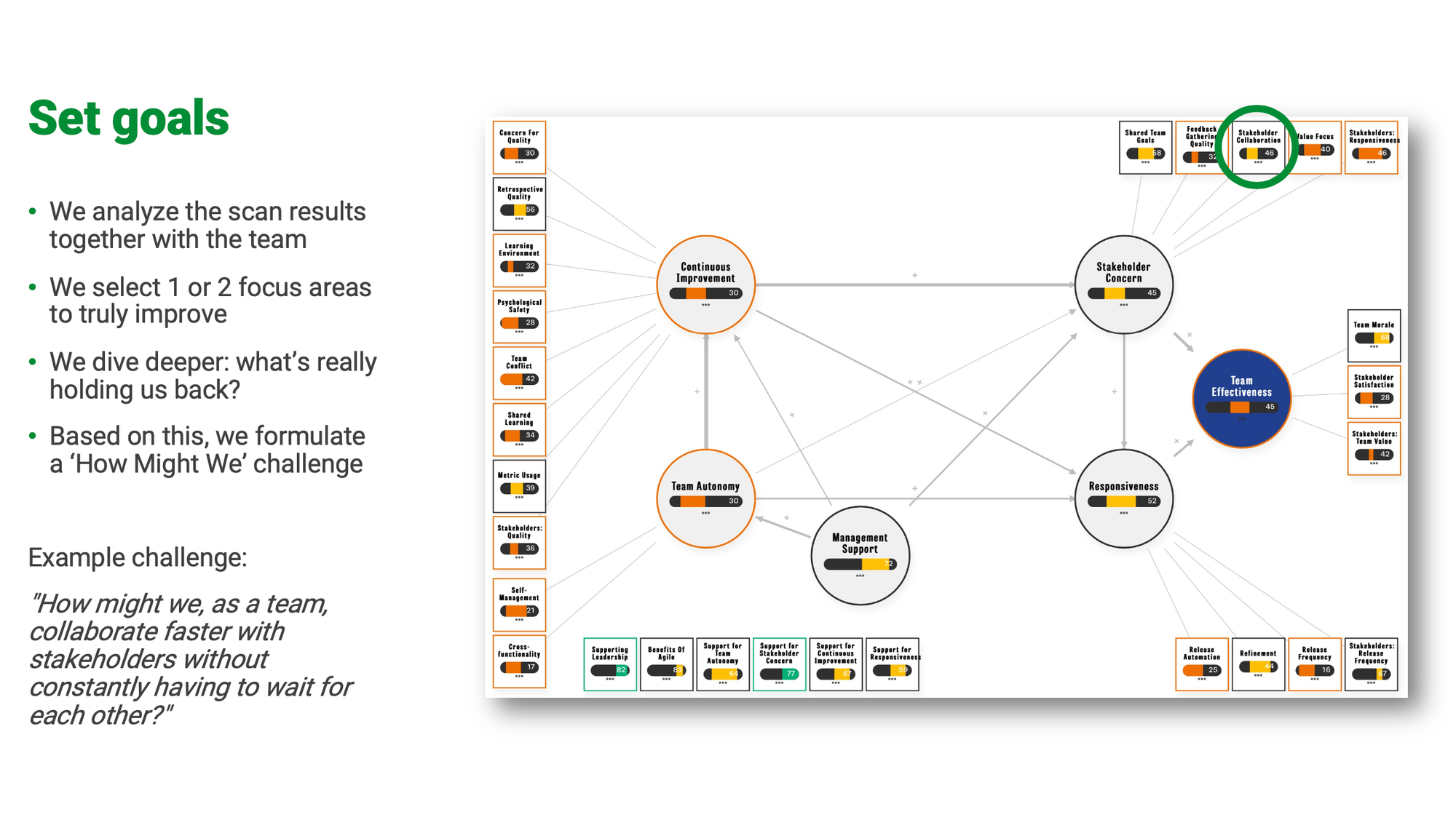
3. How do we get there?
This is where the plan comes in. Tribers co-creates a tailored journey with the team—choosing the right interventions, workshops, and support needed to make progress. It’s not about one-size-fits-all; it’s about designing something that works for this team. The team's specific context, goals, and working methods shape the journey. This ensures that each step feels relevant and doable, increasing the chances of real change.
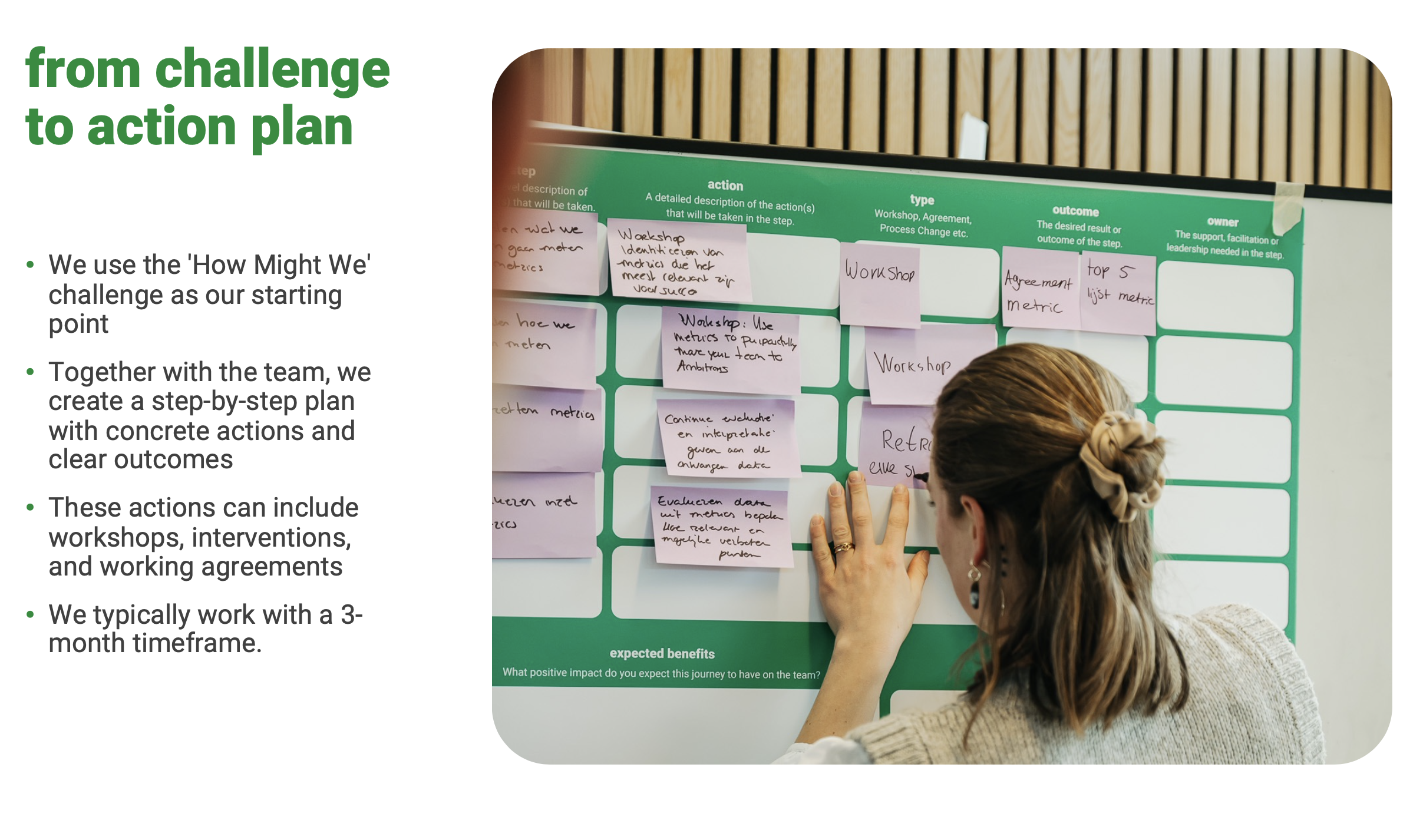
4. Guide and facilitate the journey
As the team works toward their goals, Tribers stay involved. They help translate insights into daily practice through coaching, facilitation, and reflection. Progress doesn’t come from a single session but from consistent, focused action over time. This ongoing support helps the team stay on track, navigate setbacks, and adapt when needed. It also builds confidence as new habits start to take root and make a visible difference.
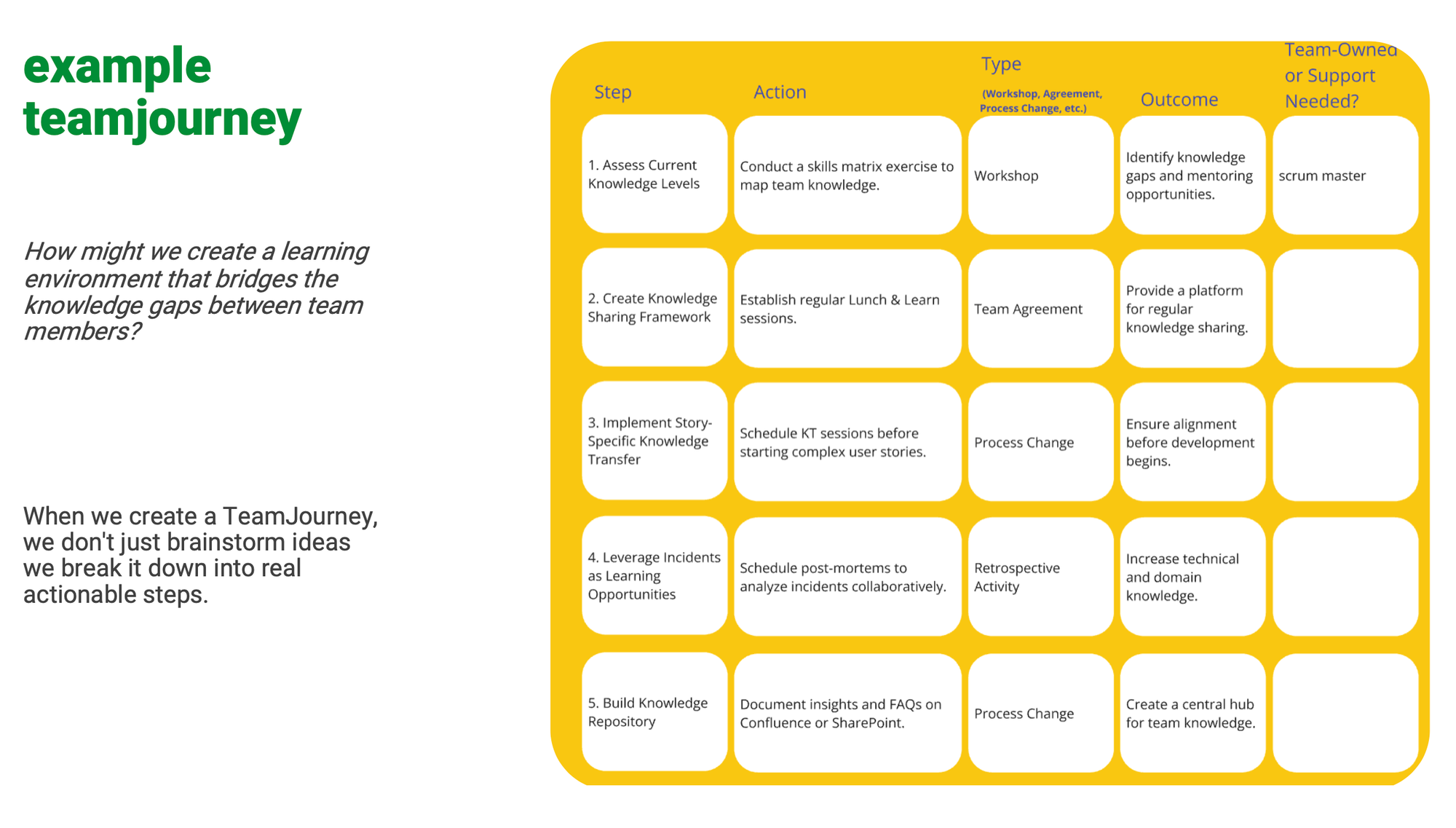
5. Reflect and measure the impact
At the end of the journey, the team revisits the original goals and scans again. They celebrate growth, acknowledge what didn’t work, and use what they’ve learned to shape their next steps. The journey may end—but the learning cycle continues. This moment of reflection reinforces a culture of continuous improvement. It also gives the team fresh energy and clarity as they move into their next chapter.
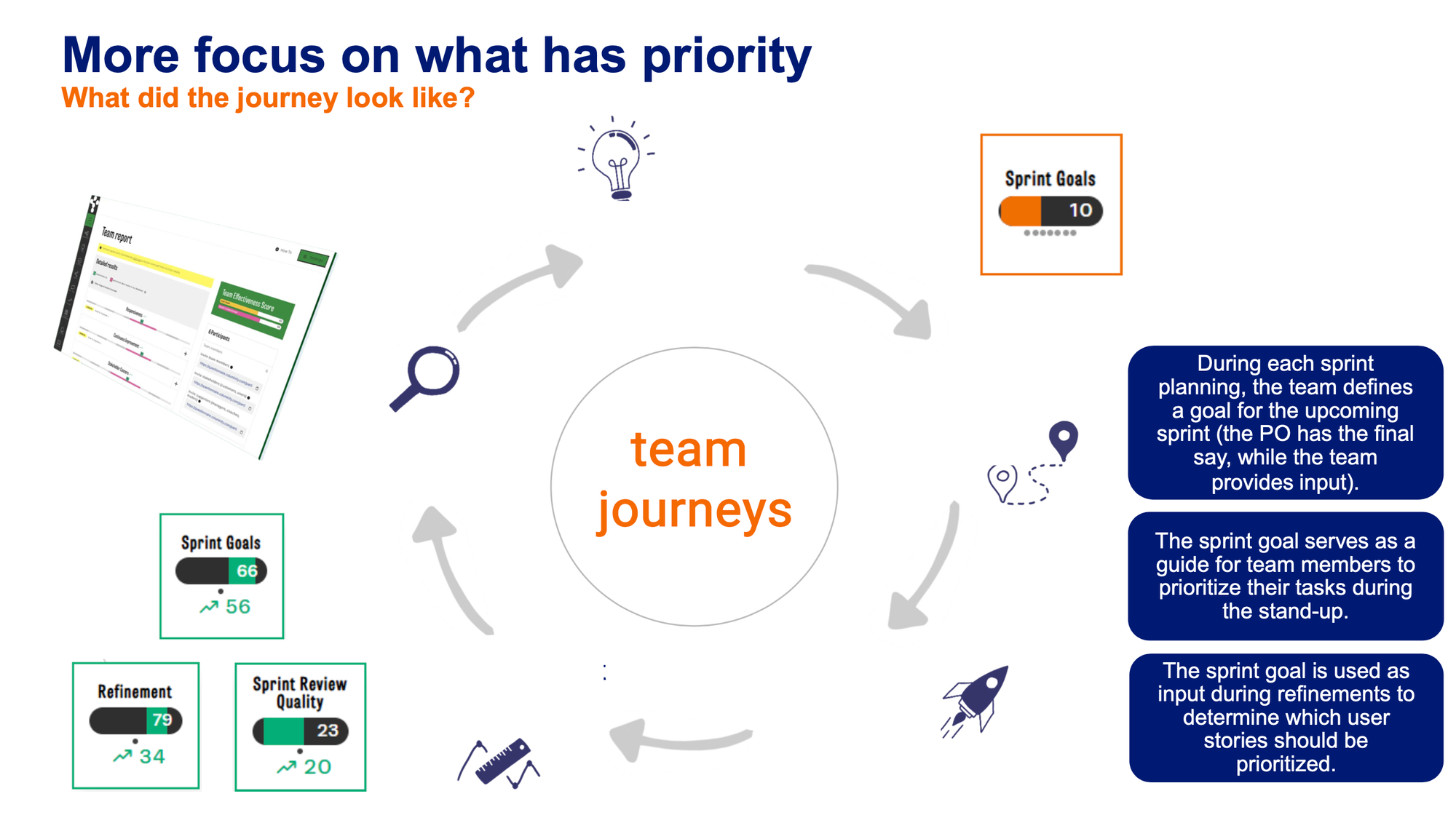
From team data to organizational growth
Tribers don’t just help individual teams grow—they help entire organizations see the bigger picture. Starting at the team level, they guide teams through structured Team Journeys to improve collaboration and effectiveness. With support from Columinity’s data and insights, they surface organization-wide patterns and highlight where multiple teams—such as those within a department—may get stuck. This enables leadership to focus their support where it will have the most impact. Tribers turn scattered team signals into clear, actionable guidance. They also encourage learning across team boundaries, helping teams build on each other’s progress. The result is stronger teams and a more connected, adaptive organization.

A few final thoughts on the collaboration
Tribers first experimented with team assessments through their internal “team selfie” approach. However, what stood out in Columinity was the strength of the scientific model—specifically, the proven relationships between different factors influencing team effectiveness. That was the key reason for the partnership.
Today, every Triber uses the team report in their work, creating a consistent and data-informed foundation across all teams. It helps measure whether a team has improved morale, stakeholder satisfaction, and other key effectiveness indicators. This makes progress visible and tangible, assisting teams to build confidence in the changes they’re making. It also allows Tribers to tailor their support based on real needs, not assumptions.
This ability to show measurable improvement makes the collaboration with Columinity especially valuable. While Columinity continues evolving scientific models, Tribers applies it with clients to create a visible, lasting impact.
Curious to explore team journeys yourself?
If you're interested in designing team journeys for your teams—or just want to learn more about what’s possible—you’re welcome to reach out. Both Tribers and Columinity are happy to share insights, tools, and experiences. Whether you want to get started or deepen what you're already doing, we’d love to help!
Go to columinity.com to try it now. Our free plan is ideal for individual teams, but with a paid plan, you can track multiple factors across multiple teams within your organization.


